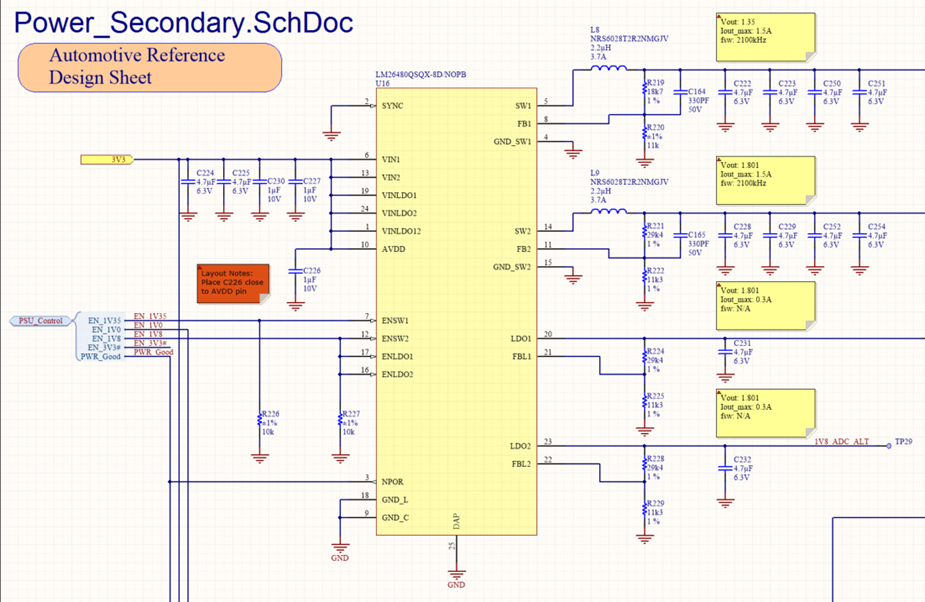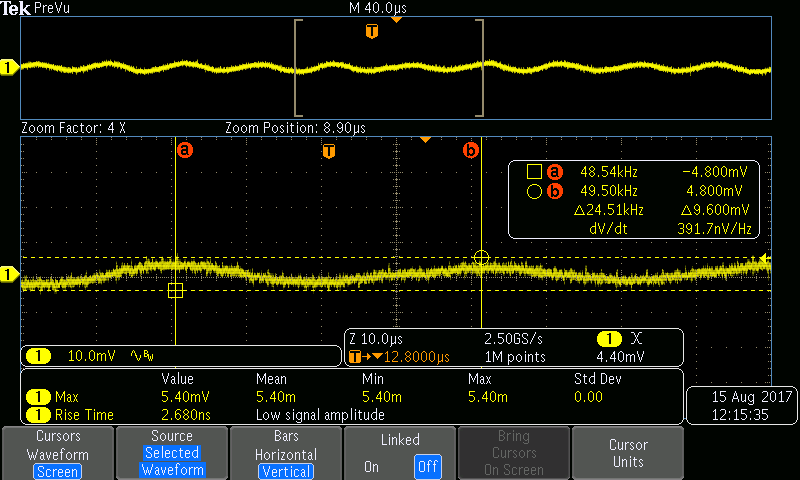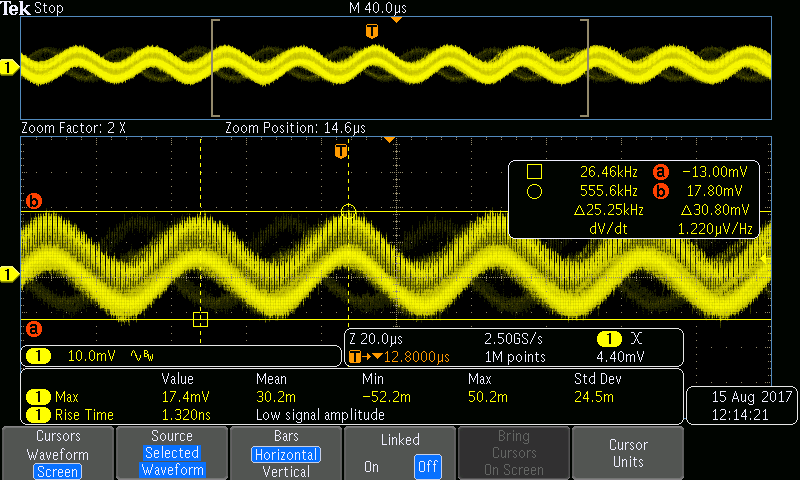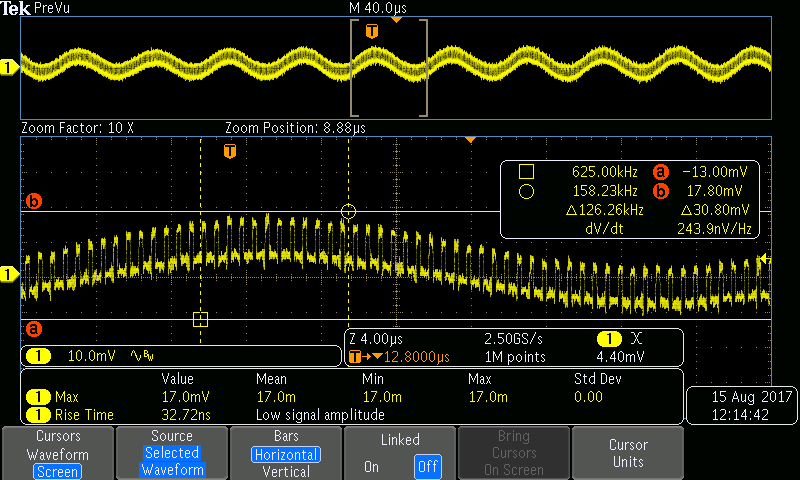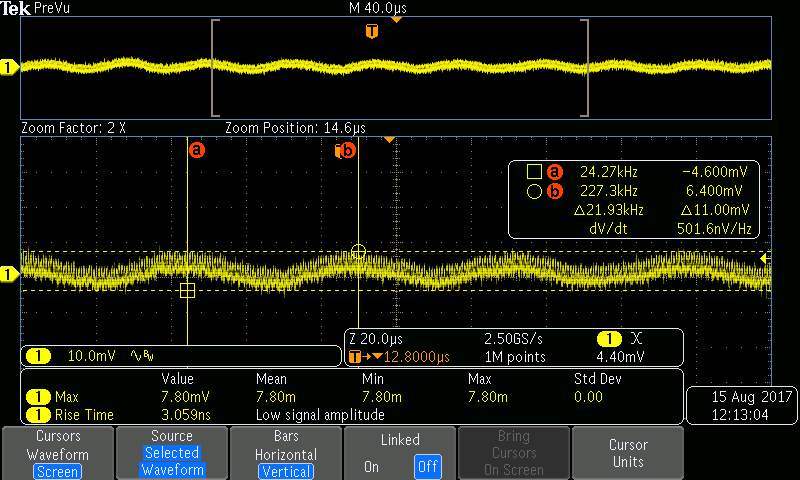Hi
I am using the LM26480-Q1 to create 1.35V and 1.8V outputs via the buck converters. The input voltage is 3.3V and is stable. Currently the LDO outputs are not used.
The schematic is attached below:
The issue is that both buck outputs has a sine wave on the output voltages. The sine wave on the 1.35V output is 31mV with a frequency of 24.5kHz as shown below. The 1.8V output has a similar sine wave but the amplitude is lower. The current drawn on the 1.35V output is 0.7A
The sine wave on the 1.8V is ok because it is a small percentage of the voltage, but I would like to get the sine wave on the 1.35V output smaller.
Any suggestions?
Thanks


